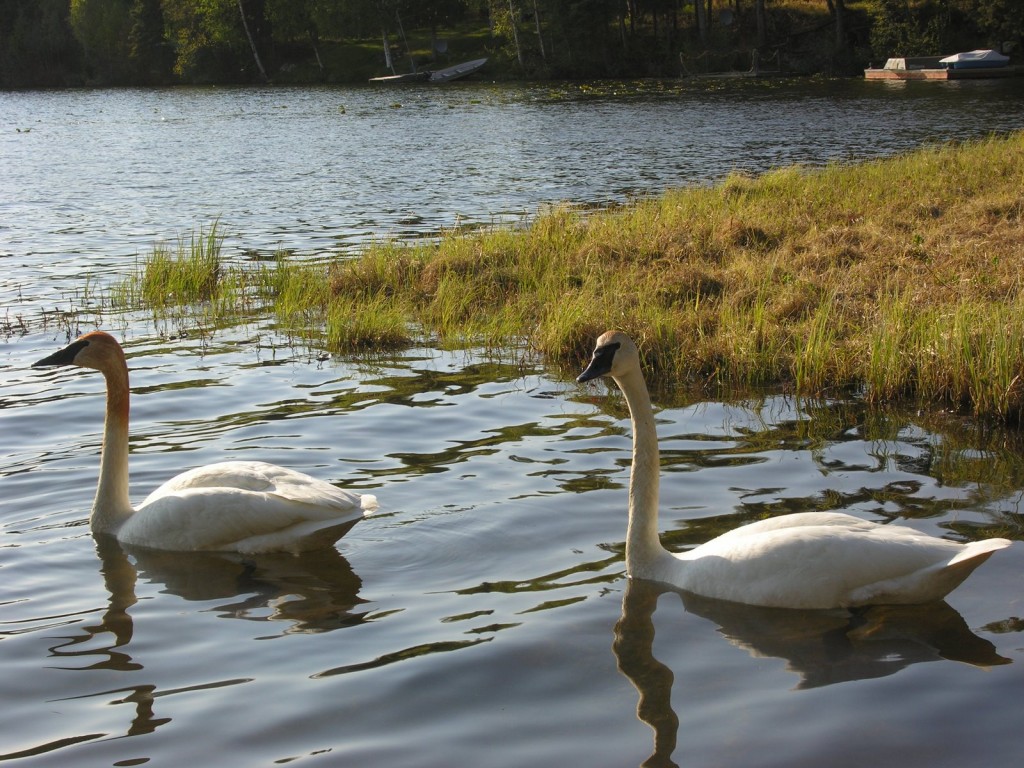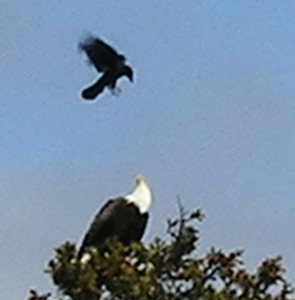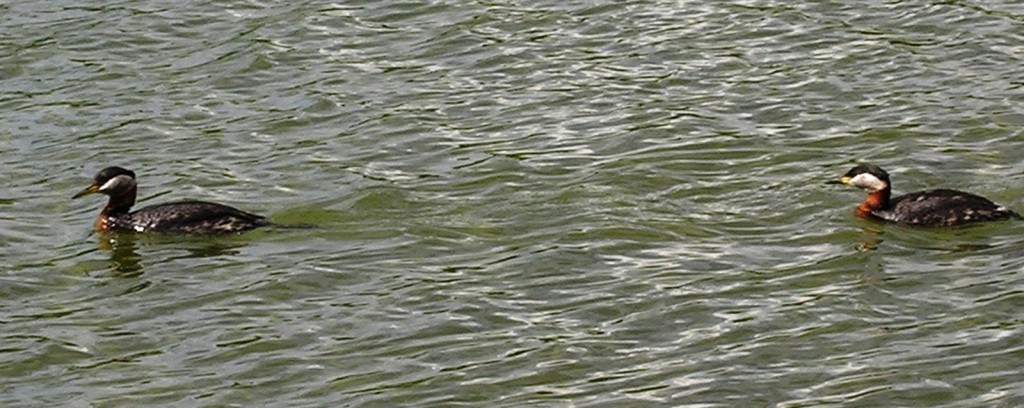Planet Earth

Most of the wildlife that we are exposed to while we work in the field up here in south central Alaska is seen in fleeting glimpses. Long enough to scramble for a camera, take a few shaky shots, and then exclaim over the incident. More often, that wildlife is seen at a distance – our grizzly on the Kenai, for example, or any one of the number of moose we see browsing from our seats in the car.
However, we are often witness to the daily lives of the birds that live on the lakes we visit. Red-necked grebes, loons, ducks, terns, Bonaparte gulls… I’ve gotten to the point where I know many of them by sound as well as sight.
So we thought the sounds of grebes and loons calling together was maybe only slightly more interesting than normal when we walked down the dock at Lalen Lake to pull our traps. Our contact, Paul, was sunning himself on the end of the dock.
“Oh yeah, they’re putting up a fuss because there’s an eagle hanging around,” he told us. We nodded sagely, knowing this was certainly cause for smaller waterfowl to put up a fuss, and set about our business.

A few minutes later, the loon’s calls were becoming a bit raucous and we all looked up. There was one loon and two red-necked grebes out in the middle of the lake. The loon was hooting wildly, slapping its wings against the water and stretching out its long black neck. It seemed to be attacking the smaller birds. (We’ve never heard of this happening before, but we have heard some of the locals tell us that a loon will surface beneath or close to other birds to startle them.) Both grebes dove. One resurfaced about thirty feet away from us on the dock closer to shore. The other grebe resurfaced next to the loon, flopping back against the choppy waters, its wings moving weakly. The loon trumpeted and smacked the water as the grebe struggled with its own injured weight.
We stood on the dock, eyes wide, wondering at the unusual attack we had just witnessed. A second later, a shape streaked out of the sky. The eagle was diving with its wings folded about three-quarters of the way and its yellow talons out. It snatched the grebe and winged off silently over the lake as the loon repeated its triumphant calls of victory, a high and haunting sound.
I didn’t even have enough time to swing my camera around and try to get a shot.
As a biology student, this was basically the coolest thing we’d ever seen in our lives. Paul said he’d never seen anything like it in his fifteen years living on the lake. And Lauren merely stated the obvious: “Planet Earth [the famous BBC documentary] right in front of us.”
